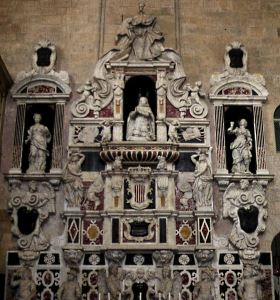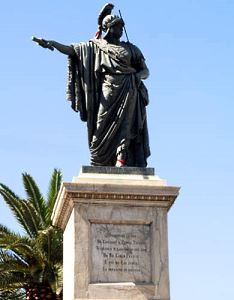The Spanish domination

In the artistic domain there was a great development, with the building of several gothic, Renaissance and baroque churches, and in Cagliari was born the "School of Stampace" that produced several retabli, a typical Spanish painting for the altar.
The Spanish domination will end in 1700, with the death of Charles the 2nd, who died without heirs.
Short Austrian period and Piedmontese kingdom
 In 1708 the Austrian occupied Sardinia and in 1713 the island was officially under the rule of the Asburgo. But two years later, with the Treaty of London, the Kingdom of Sardinia was given to the Dukes of Savoy, princes of Piedmont. The Piedmontese carried on a project to introduce the Italian language in the island, where Catalan was still used in the official documents. The towns were reorganised and the road "Carlo Felice" linking the south with the north was built.
In 1708 the Austrian occupied Sardinia and in 1713 the island was officially under the rule of the Asburgo. But two years later, with the Treaty of London, the Kingdom of Sardinia was given to the Dukes of Savoy, princes of Piedmont. The Piedmontese carried on a project to introduce the Italian language in the island, where Catalan was still used in the official documents. The towns were reorganised and the road "Carlo Felice" linking the south with the north was built.
In 1793 the Sardinian Parliament asked for more autonomy but the piedmontese refused, so a revolt exploded forcing the viceroy to leave the island. Nevertheless, the piedmontese’s rule will go on until 1861, when the Kingdom of Italy was born.
Italian Sardinia
The end of the 19th century was for the island another period of disasters, as the plague of cholera in 1885. But some progress were brought by the building of the railway, the development of the mining extraction and the creation of the first workers’ associations.
During the Second World War, Sardinia had an important role of aircraft carrier in the Mediterranean, but suffered also several air raids, particularly Cagliari that was greatly destroyed between February and may, 1943. In 1946 the Italian Republic was proclaimed, and in the same year, the last anti-malaric campaign was carried on: in a few years this plague was permanently eradicated.
Since 1948, Sardinia is an Autonomous Region with Special Statute, which gives her particular conditions of autonomy.





